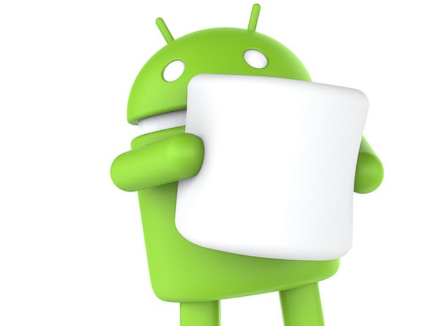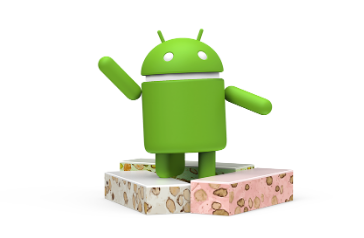Android Lollipop

Android Lollipop (codenamed Android L during development) is the fifth major version of the Android mobile operating system developed by google and the 12th version of Android, spanning versions between 5.0 and 5.1.1.
Android lollipop was launched on June 25, 2014 at the Google I/O 2014 conference and it became available through official over-the-air (OTA) updates on November 12, 2014 for select devices that run distributions of Android serviced by Google (such as Nexus and Google Play Edition devices). Its source code was made available on November 3, 2014.
Some of the changes in the lollipop include improvements to the notifications, which can be accessed from the lockscreen and displayed within applications as top-of-screen banners. However, one of the major changes in the Lollipop release is a redesigned user interface built around a design language referred to as Material Design, which was made to retain a paper-like feel to the interface. There are also internal changes made by google whereby Dalvik is officially replaced with the Android Runtime (ART) so as to improve application performance. Also, introduced are changes intended to improve and optimize battery usage.
What You Need To Know About Android Lollipop
- Android lollipop is the codename for Google’s Android operating system version 5.0.
- The main feature of this version is that it came with a major user interface built with material design to offer a paper-like feel to user through the UI. Also with this version, it is easy to access the notifications from the lock screen.
- Android lollipop has what is referred to as priority feature that rises to the notification screen to notify receivers about the vibrating alerts, be it message or a notification alert.
- Android lollipop has 37% user base.
- Android lollipop does not support USB C.
- The lock screen of Android Lollipop comprises call, unlock and camera ions. Also the clock that comes with this device is less stylish.
- Lollipop includes better support for alternative launcher apps. You can find a list of the currently installed apps by choosing Home inside settings (the default one on Lollipop is the Google Now Launcher.
- Lollipop comes with a dedicated Battery saver tool.
- In Android Lollipop, most of the items in the quick setting menu are actionable. A feature can be enabled or disabled just by tapping the top part of it.
- Android lollipop has only a limited amount of emojis are available.
- The camera app can be launched in the standard method only.
- Copy and paste had problems with lags in time.
Marshmallow

Android Marshmallow (codenamed Android M during development) is the sixth major version of the Android operating system and the 13th version of Android. First released as a beta build on May 28, 2015, it was officially launched on October 5, 2015, with the Nexus devices being the first to receive the update.
The main aim of Marshmallow focused on improvement of the overall user experience of its predecessor, Lollipop. It introduced new permissions architecture, new APIs for contextual assistants, a new power management system that reduces background activity when a device is not being physically handled, native support for fingerprint recognition and USB-C connectors, the ability to migrate data and applications to a microSD card and other internal changes.
What You Need To Know About Marshmallow
- Android marshmallow is the sixth major version of Android operating system. The version was majorly developed for improving the architect of its preceding operating system. It introduced new power management system, APIs and new permission architecture.
- Other features included a native support for fingerprint recognition, USB Type-C connector and an efficient ability to migrate data.
- Android marshmallow has a special UI tuner system, therefore users need to tap on the gear icon for about five seconds in order to set notification icon.
- Marshmallow has 12% user base.
- The USB C will enable the phone to charge faster and for the device to gain faster rates.
- Android marshmallow has a pattern lock system making it easy for users to unlock their devices.
- Android Marshmallow screen lock comprises of microphone, unlock and camera icons. Also the clock that comes with device is more stylish.
- Android marshmallow is also made up of a quick setting feature which allows users to add, remove or rearrange specific settings.
- Android marshmallow also comes with a battery optimization feature to improve battery life.
- Android marshmallow has more than 200 emojis.
- The camera application can be opened while the phone is turned off while in use or when the device is locked.
- An easier method has been to embed to enhance efficiency of copy and paste. There is no lag with copy or paste with this update.
Nougat

Android Nougat (codenamed Android N during development) is the seventh major version and 14th original version of the Android operating system. First released as an alpha test version on March 9, 2016, it was officially launched on August 22, 2016, with Nexus devices being the first to receive the update. The LG V20 was the first Smartphone released with Nougat.
Nougat introduced major changes to the operating system and its development platform, including the ability to display multiple apps on-screen at once in a split-screen view, support for inline replies to notifications and an expanded ‘’DOZE’’ power-saving mode that restricts device functionality once the screen has been off for a period of time. It also switched to an OpenJDK-based Java environment and received support for the Vulkan graphics rendering API and seamless system updates on supported devices.
What You Need To Know About Nougat
- Android Nougat is the seventh major version of the android OS. The major advancement in this version was the change in the operating system and its platforms of development.
- Additional features include a multitasking interface.
- Android Nougat provides personalized settings to help users set their settings as per the need. The notification system itself also offers other useful settings to the users.
- As of July 2020, 10.29 of Android devices use this version.
- Android Nougat support USB C.
- In as far settings is concerned, Android Nougat does not come with anything new however there is a wide range of exciting features to users. With this version, it is easy to customize the settings menu.
- Android Nougat has been developed with an advanced fingerprint lock to protect user’s data on the phone.
- For Android 7 Nougat users, there is personalized notification system.
- Android Nougat also comes with over 200 emojis.
- Android Nougat has ability to display multiple apps on the screen using split screen facility as well as improved version DOZE.
- The Nougat version has been designed in such a way that the users can view notifications from different apps on the home screen and well as respond to them independently and respectively.
- Android Nougat comes with more enhanced security features such as File based encryption direct boot and verified boot. Direct boot is a facility to run certain apps when the device is powered on but not unlocked whereas verified boot is a facility feature that prevents any doubtful devices connected to the system from booting.
Also Read: Difference Between Input And Output Device
Difference Between Android Lollipop, Marshmallow And Nougat In Tabular Form
| BASIS OF COMPARISON | LOLLIPOP | MARSHMALLOW | NOUGAT |
| Description | Android Lollipop is the fifth major version of the Android mobile operating system developed by google. | Android marshmallow is the sixth major version of Android operating system. | Android Nougat is the seventh major version of the android OS. |
| During Development | Codenamed Android L during development. | Codenamed Android M during development. | Codenamed Android N during development. |
| Additional Features | The main feature of this version is that it came with a major user interface built with material design to offer a paper-like feel to user through the UI. | Additional features included a native support for fingerprint recognition, USB Type-C connector and an efficient ability to migrate data. | Additional features include a multitasking interface. |
| Notification | Android lollipop has what is referred to as priority feature that rises to the notification screen to notify receivers about the vibrating alerts, be it message or a notification alert. | Android marshmallow has a special UI tuner system, therefore users need to tap on the gear icon for about five seconds in order to set notification icon. | Android Nougat provides personalized settings to help users set their settings as per the need. |
| Percentage Of Users | Android lollipop has 37% user base. | Marshmallow has 12% user base. | As of July 2020, 10.29 of Android devices use this version. |
| USB-C Support | Android lollipop does not support USB C. | The USB C will enable the phone to charge faster and for the device to gain faster rates. | Android Nougat support USB C. |
| Lockscreen | The lock screen of Android Lollipop comprises call, unlock and camera ions. Also the clock that comes with this device is less stylish. | Android marshmallow has a pattern lock system making it easy for users to unlock their devices. | With this version, it is easy to customize the settings menu. |
| Emojis | Has only a limited amount of emojis are available. | Has more than 200 emojis. | Comes with over 200 emojis. |
| Specific Settings | Most of the items in the quick setting menu are actionable. A feature can be enabled or disabled just by tapping the top part of it. | It is also made up of a quick setting feature which allows users to add, remove or rearrange specific settings. | For Android 7 Nougat users, there is personalized notification system. |
| Copy & Paste | Copy and paste had problems with lags in time. | An easier method has been to embed to enhance efficiency of copy and paste. | An easier method has been to embed to enhance efficiency of copy and paste. |